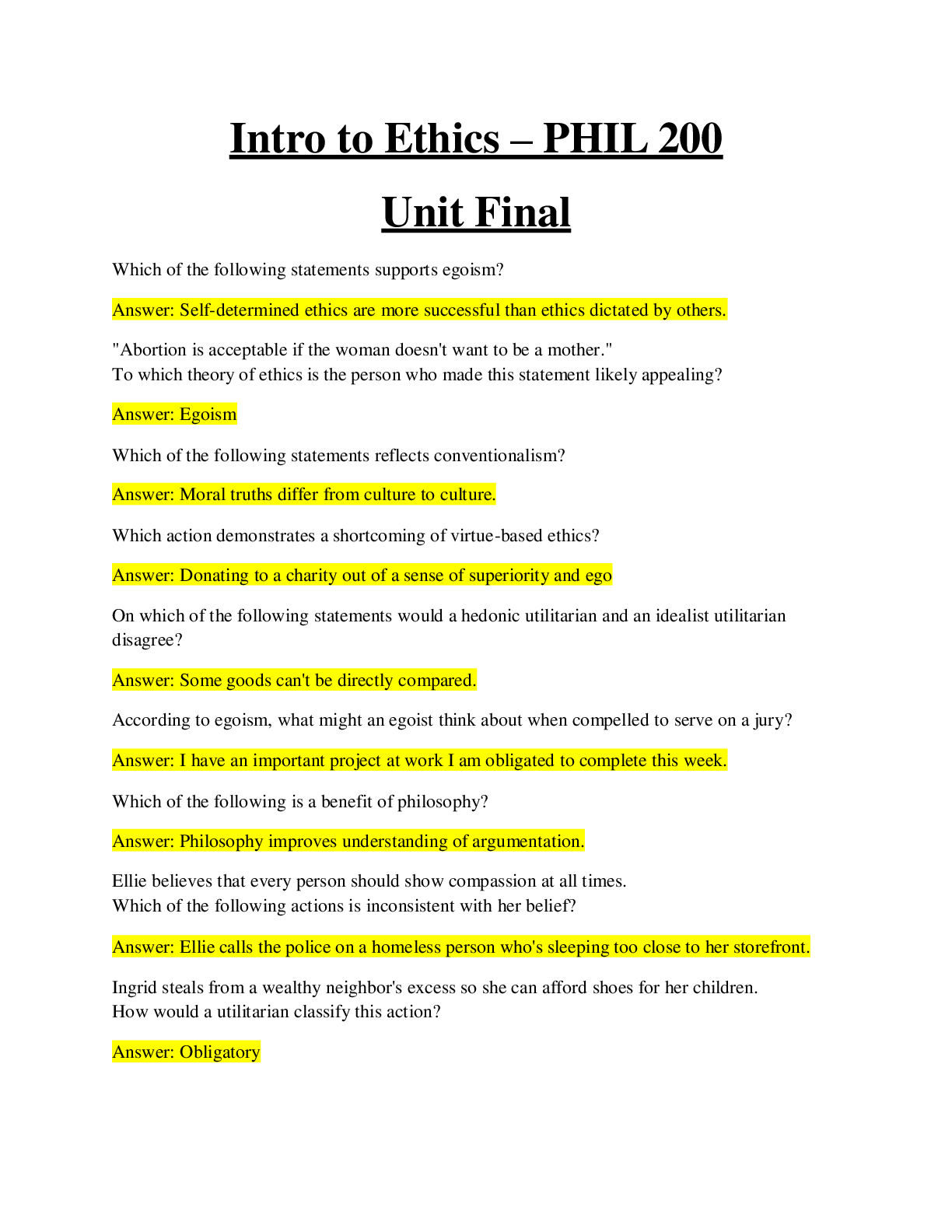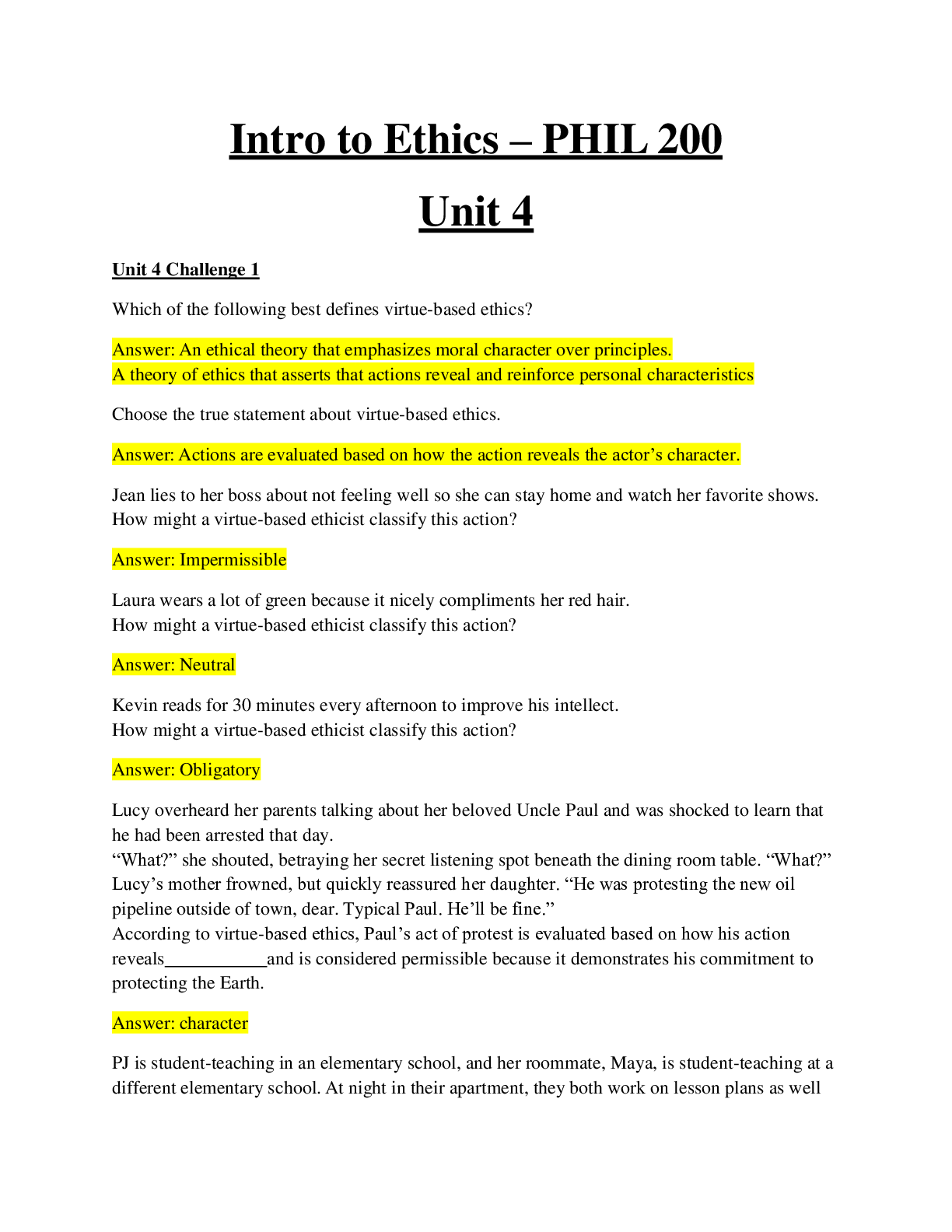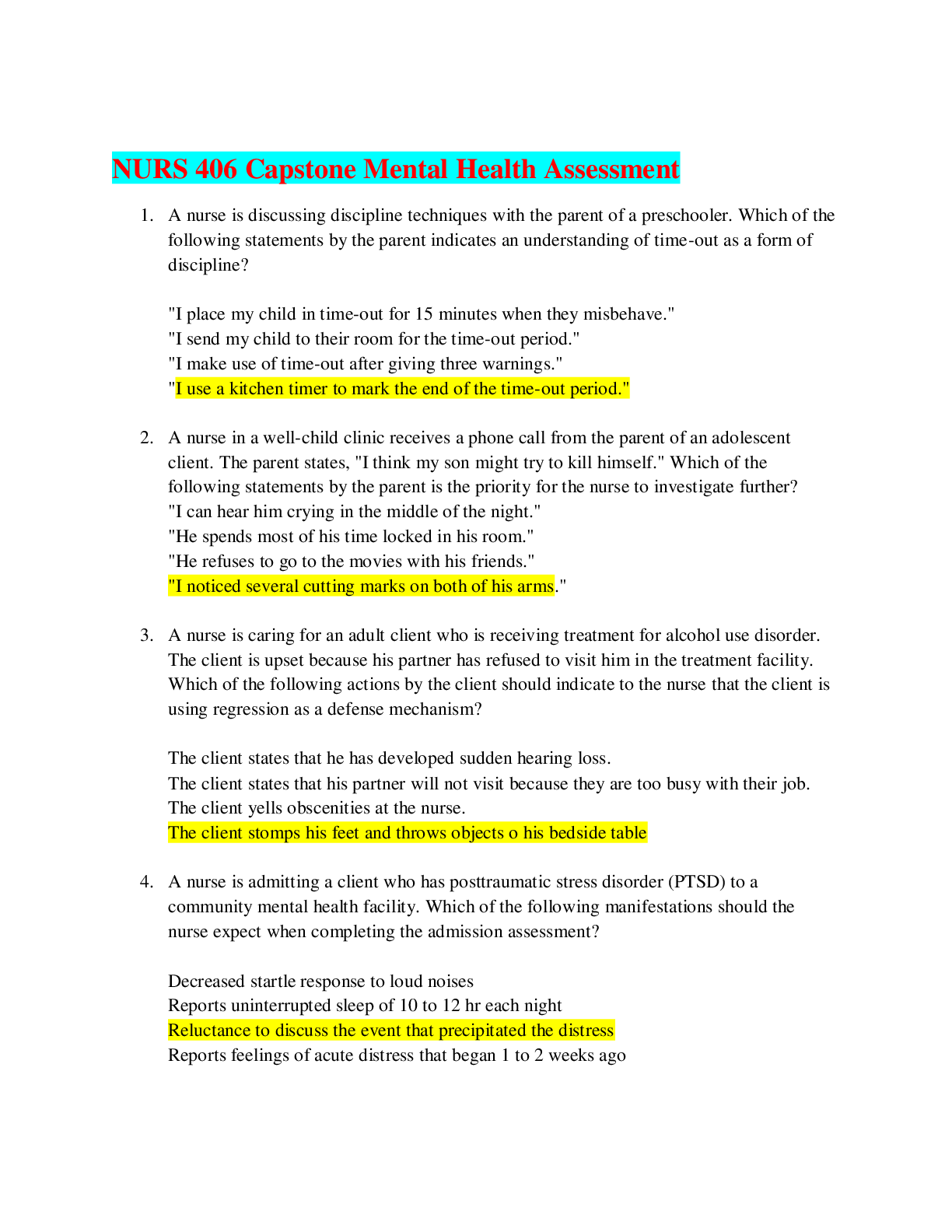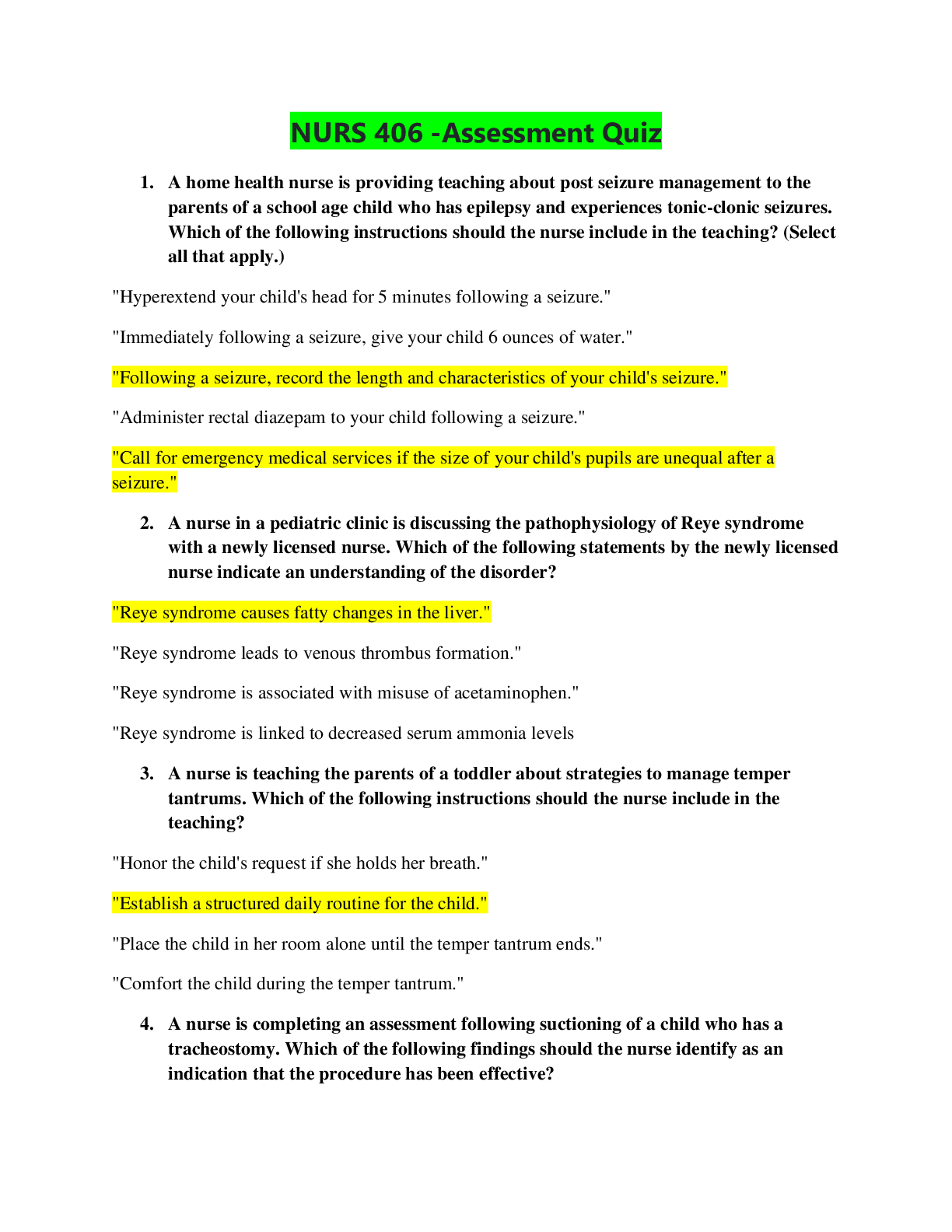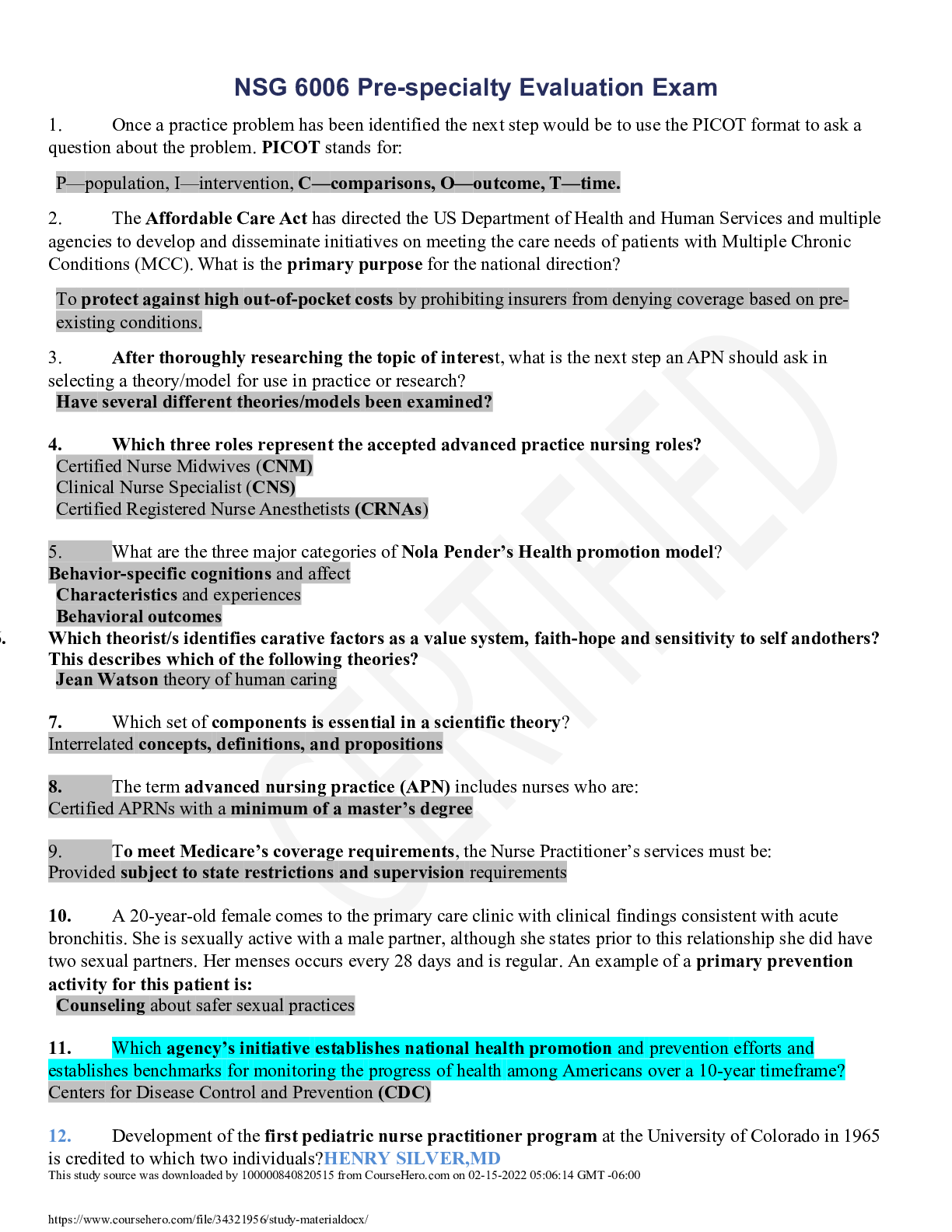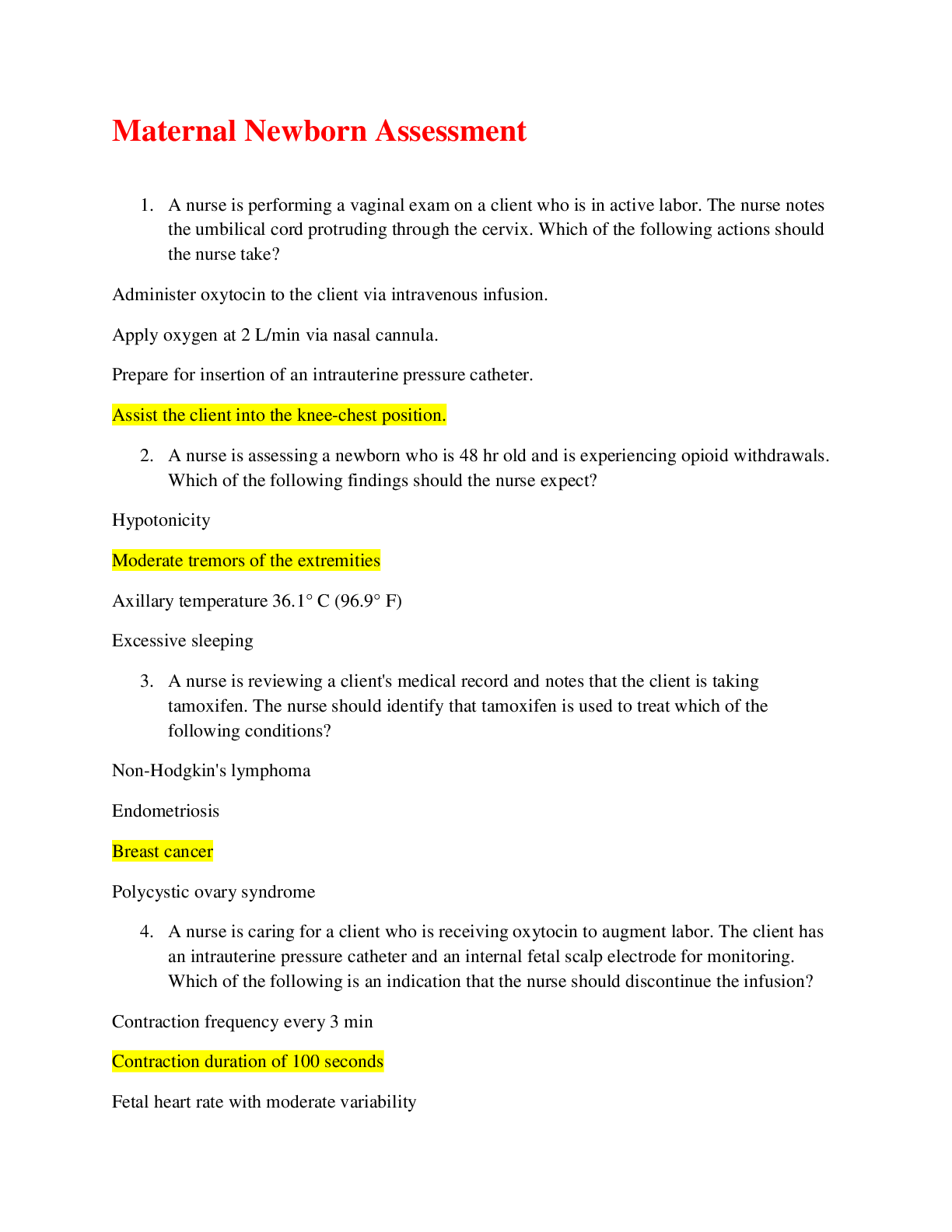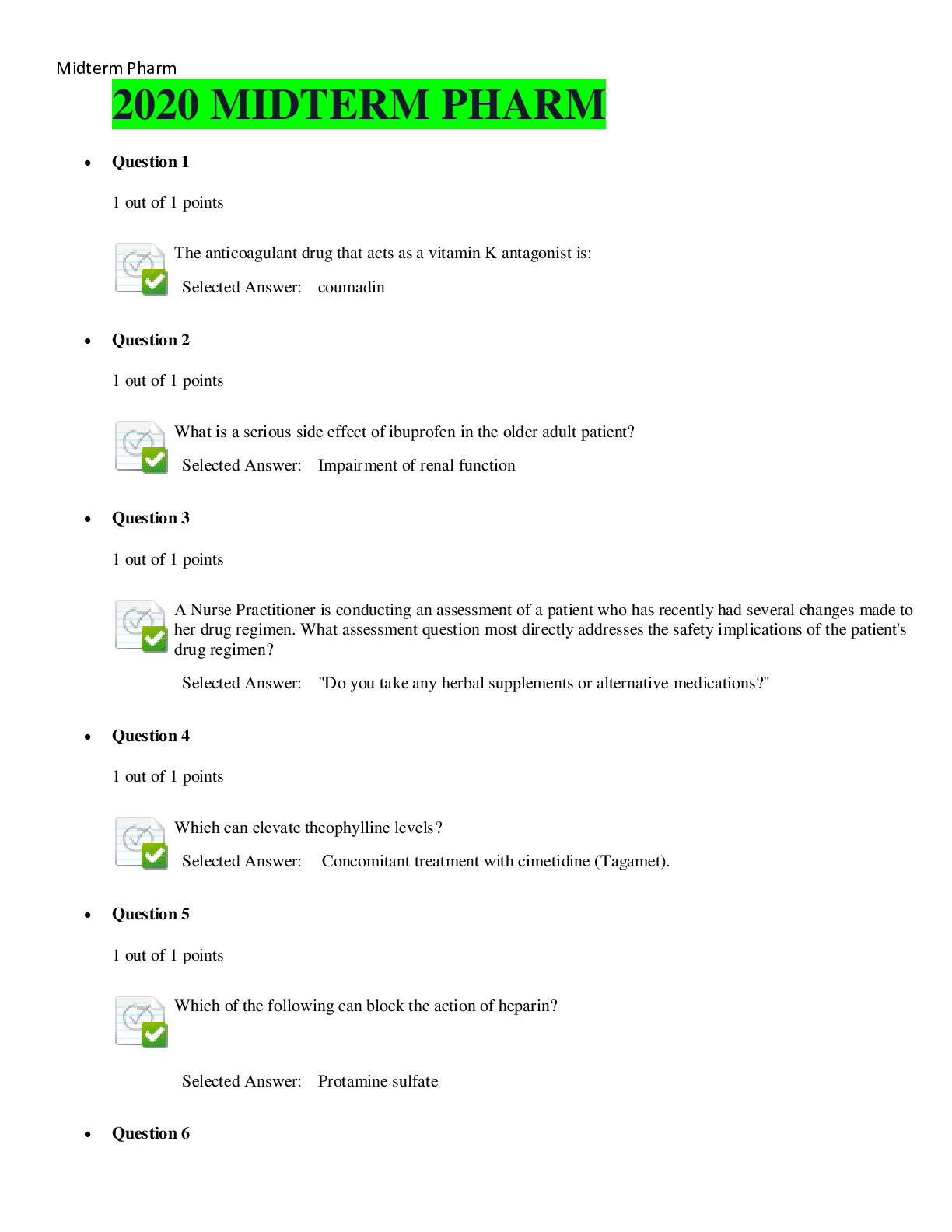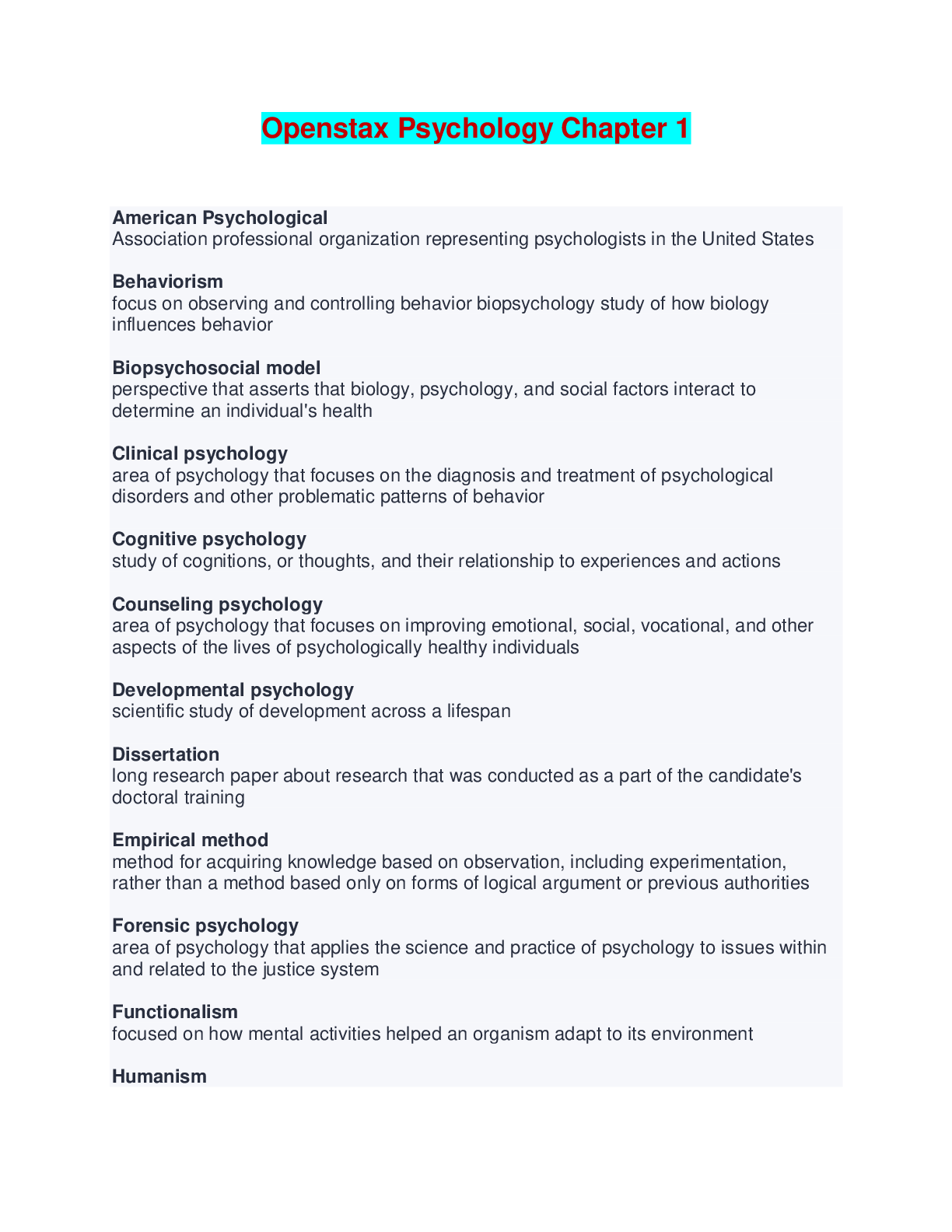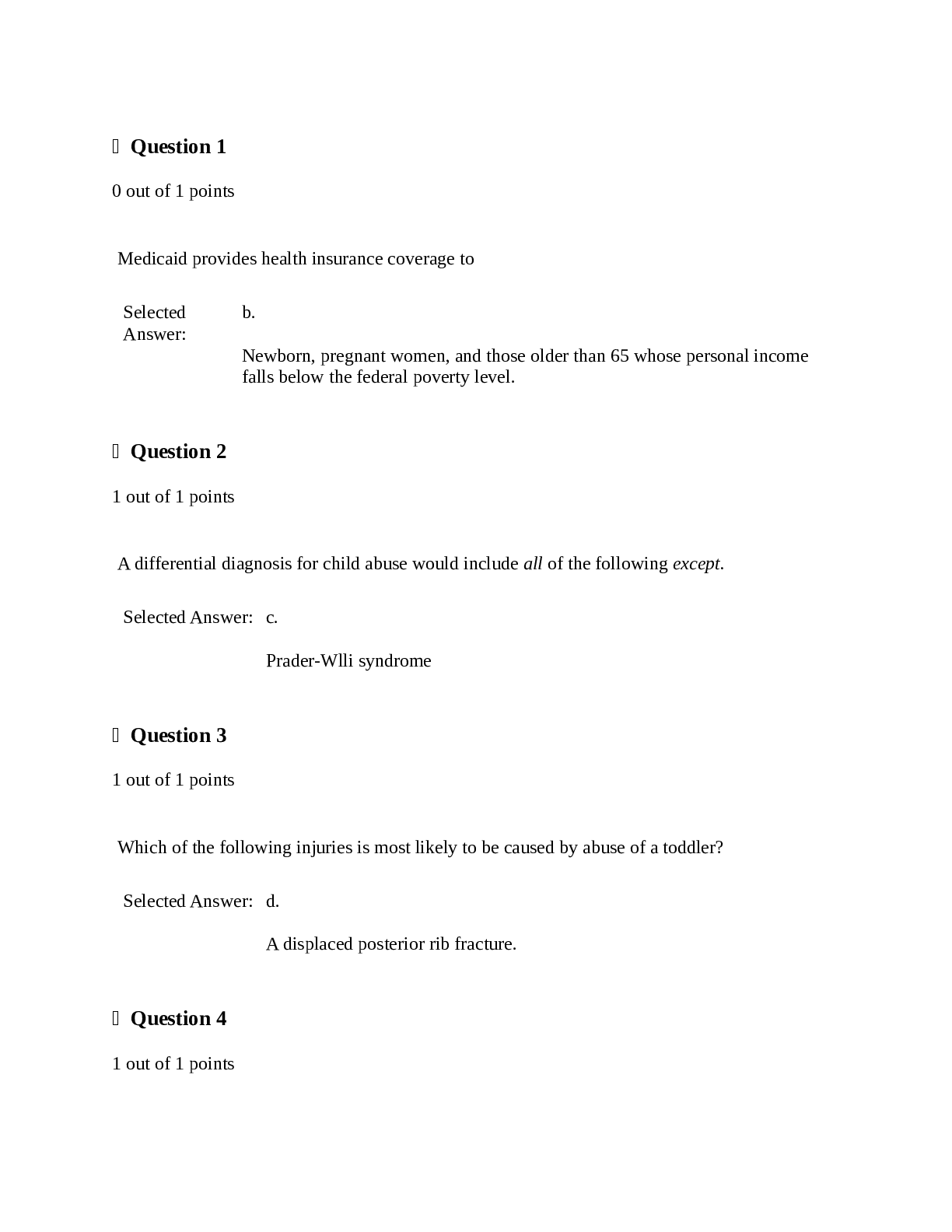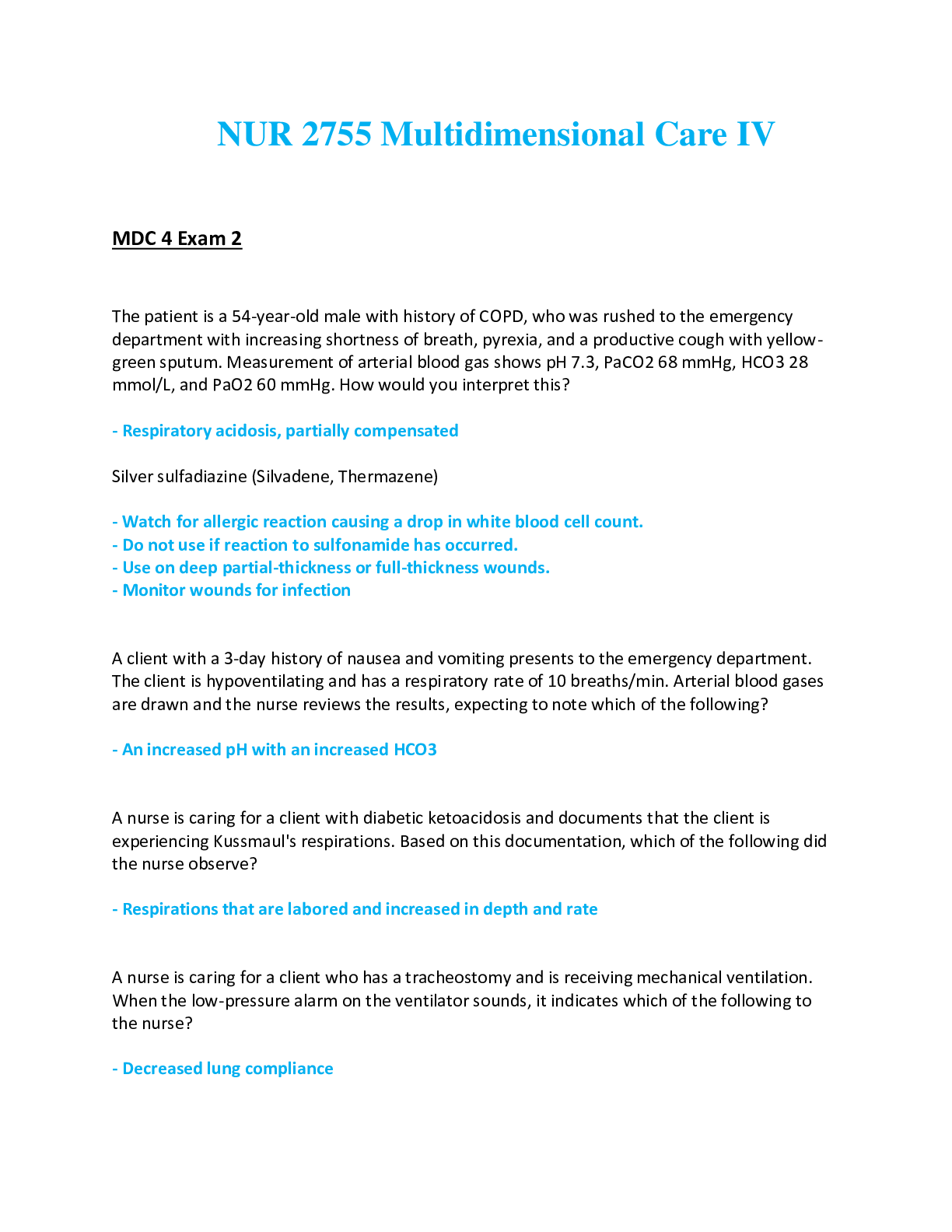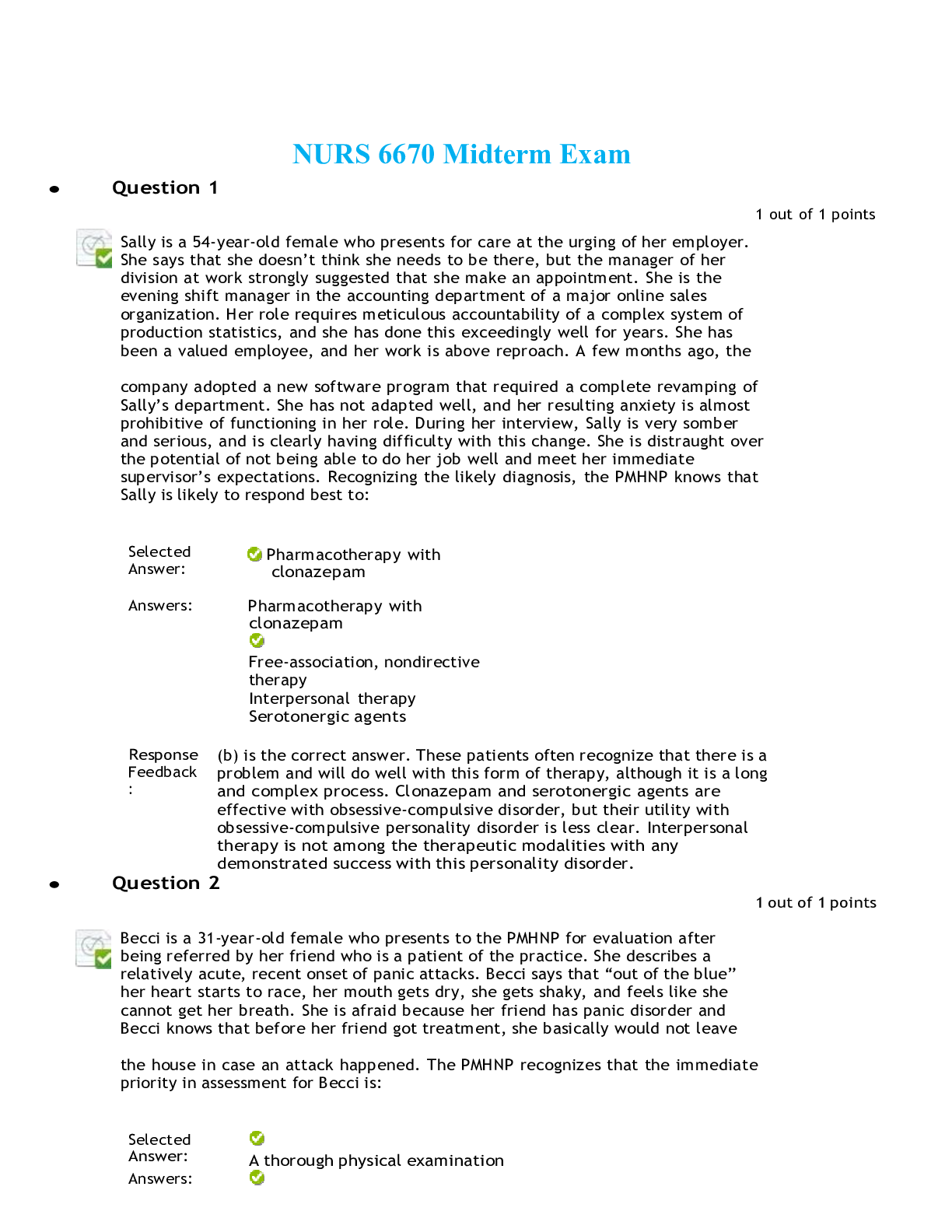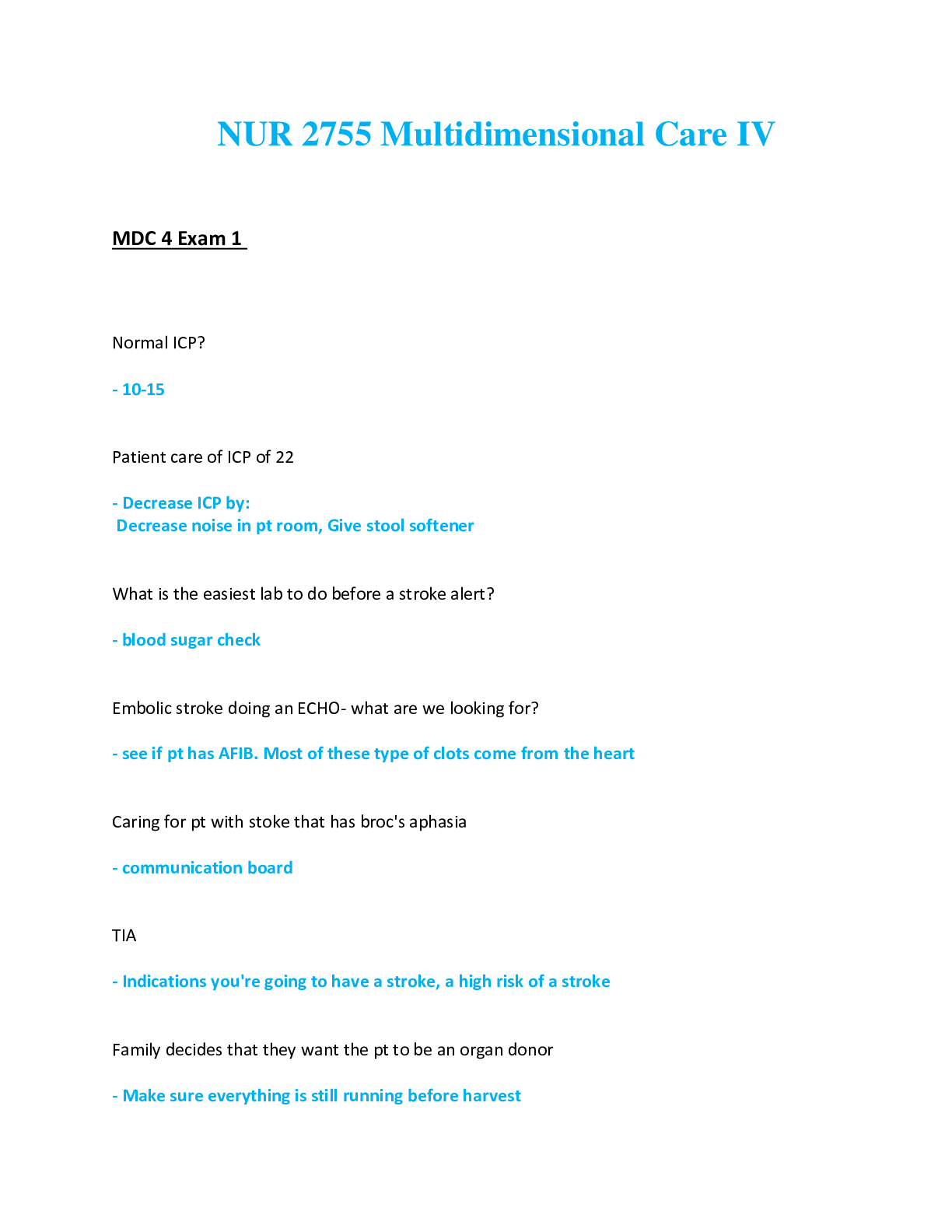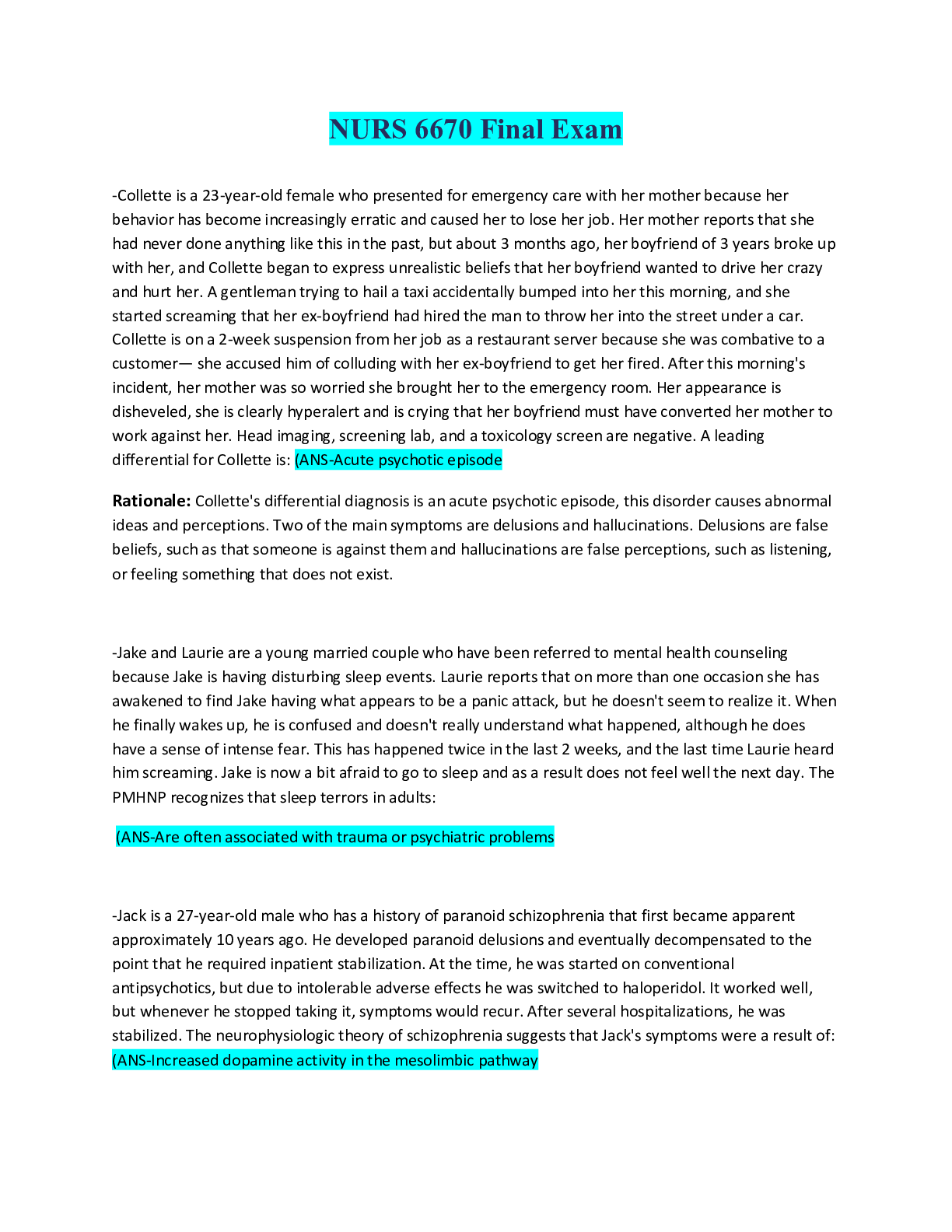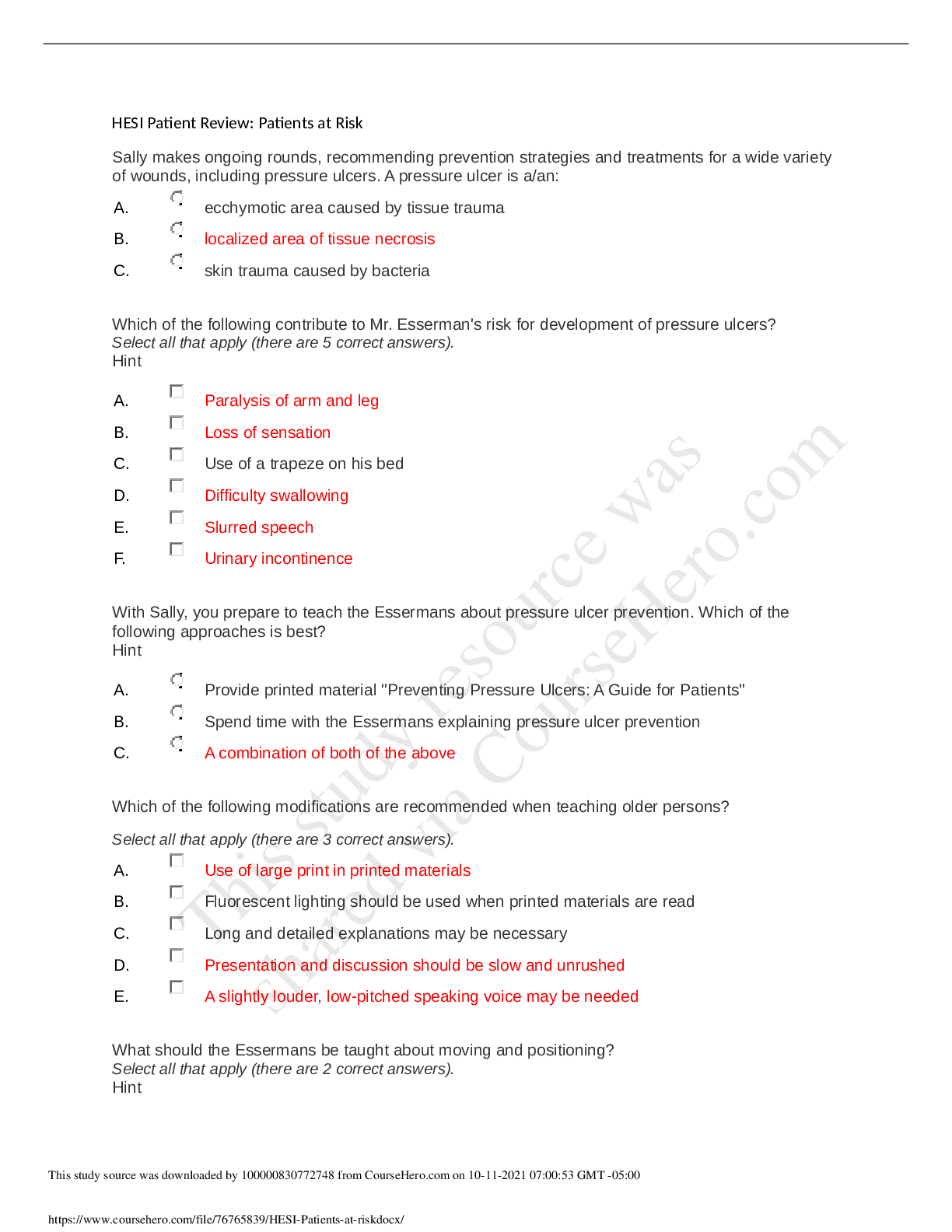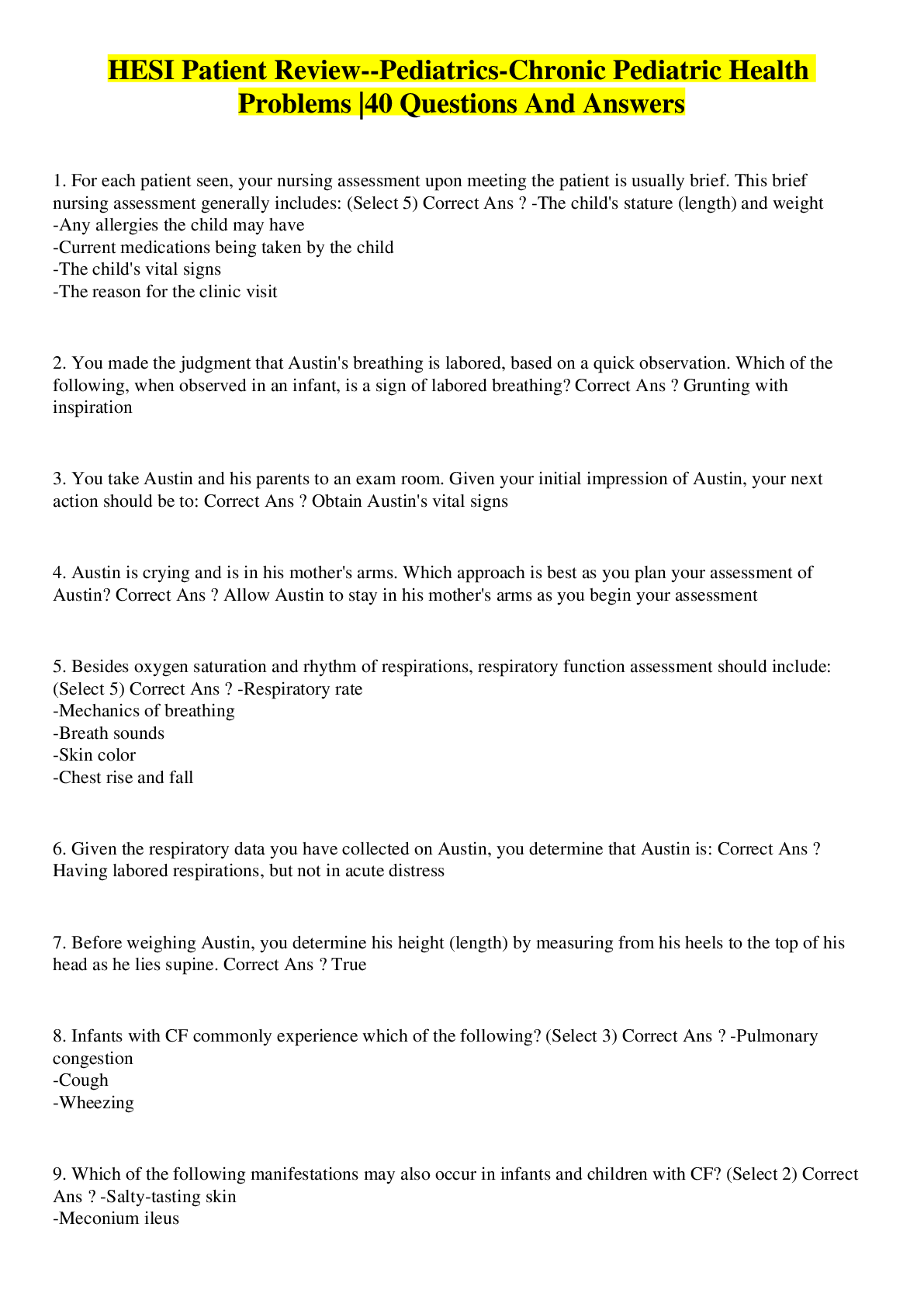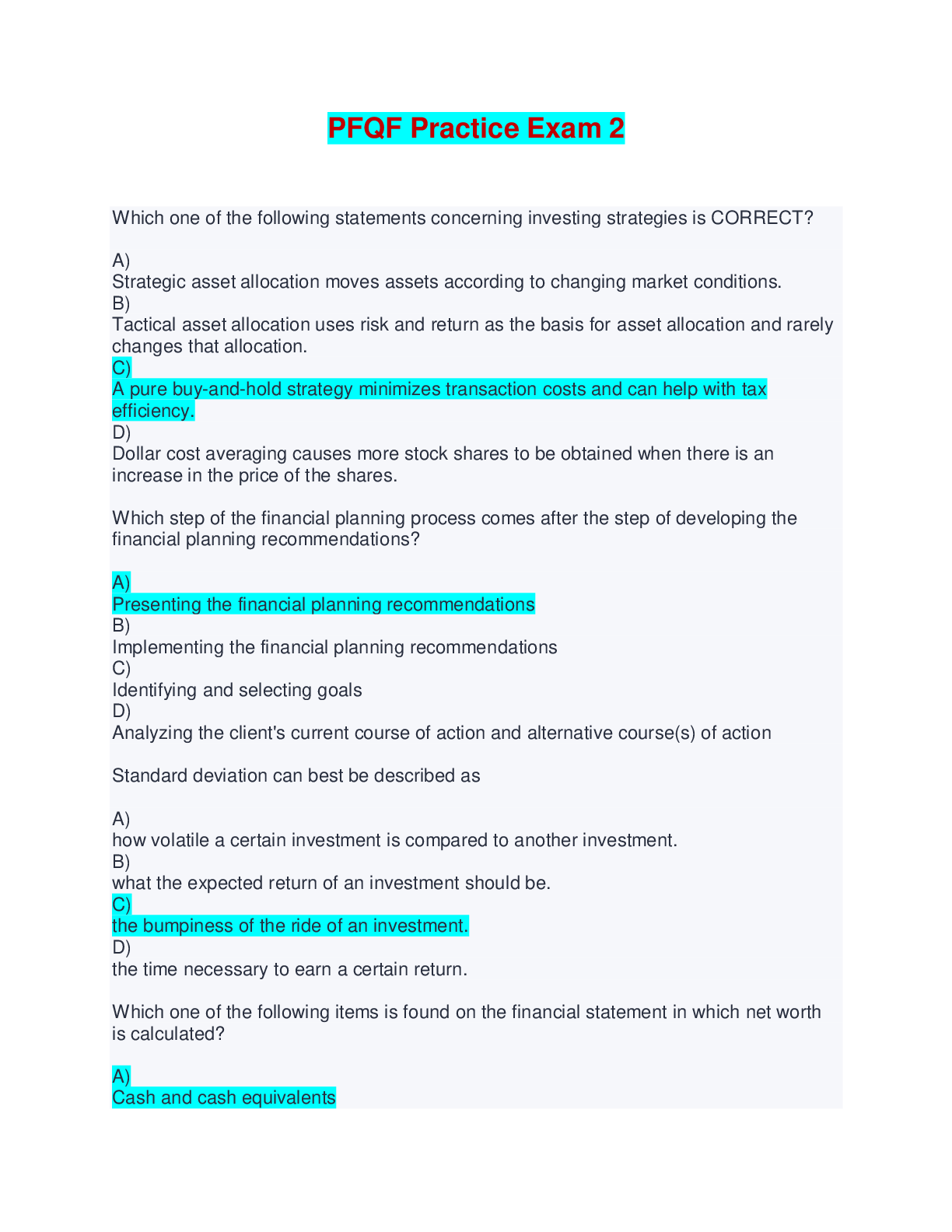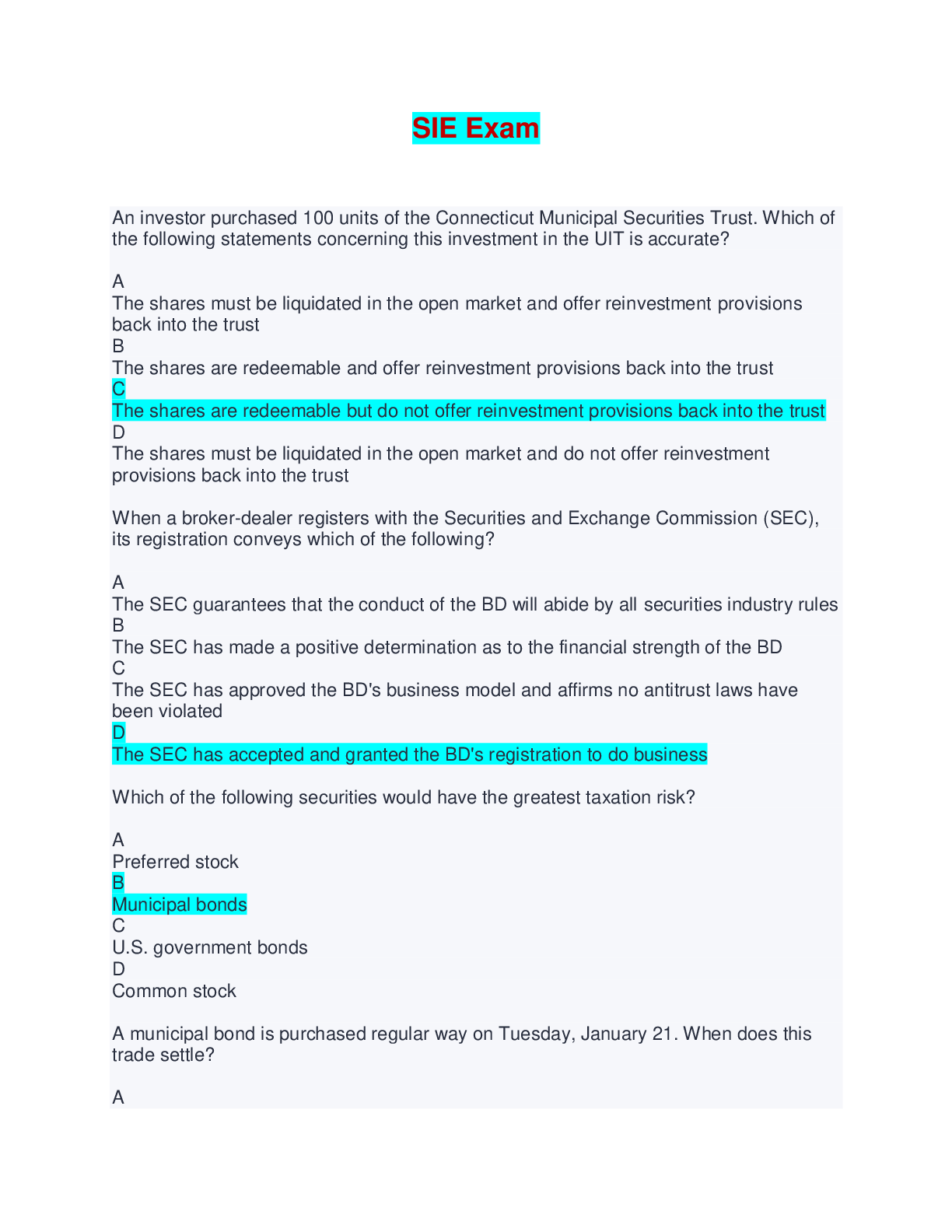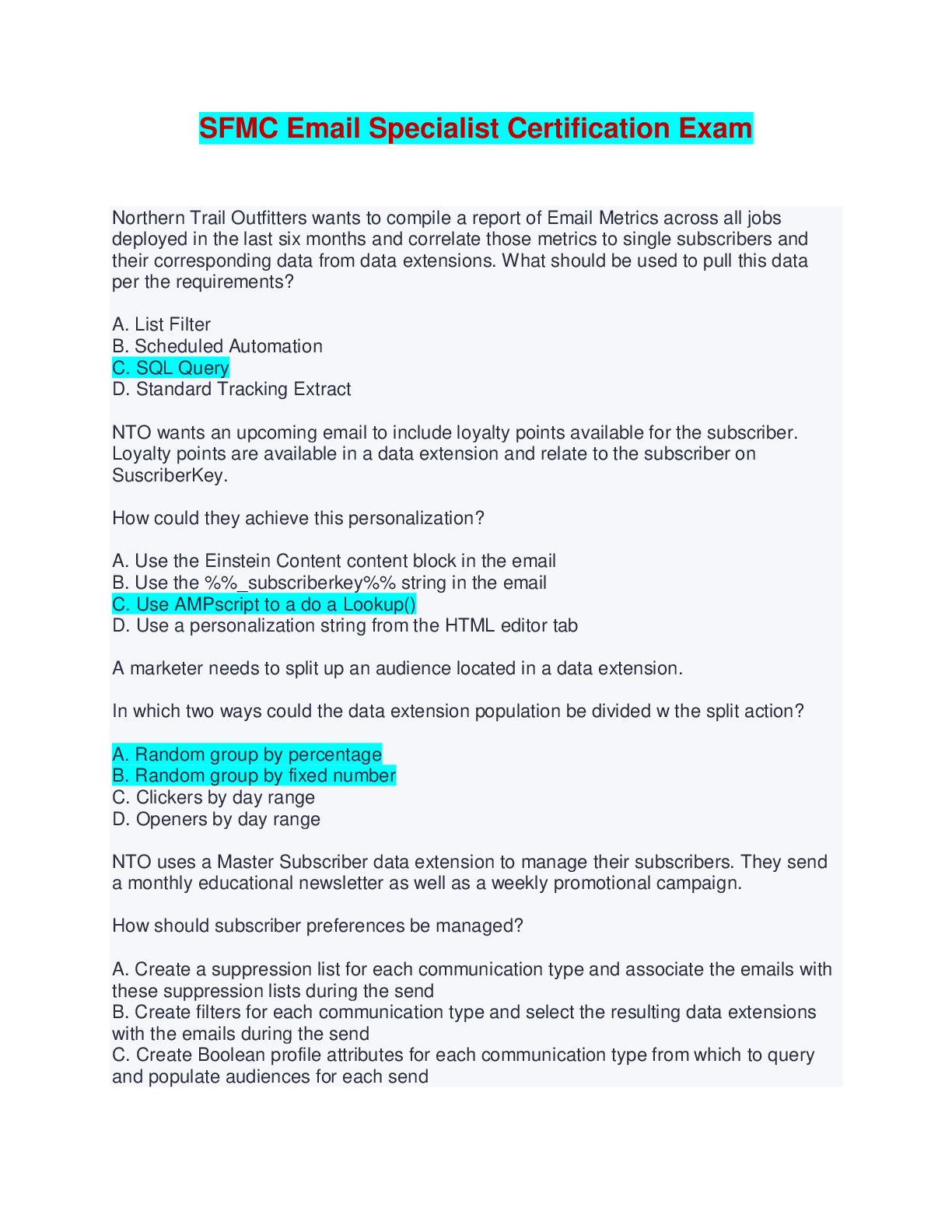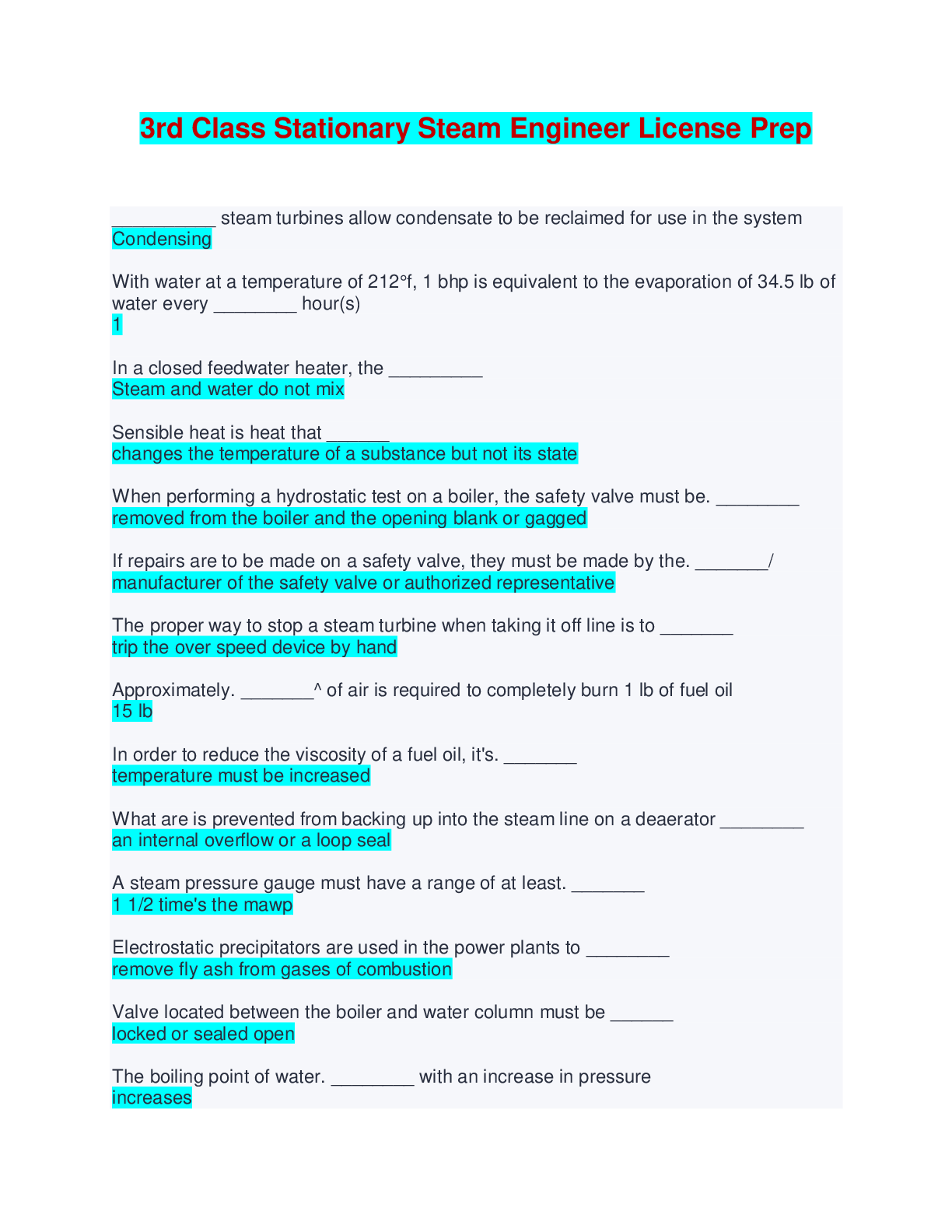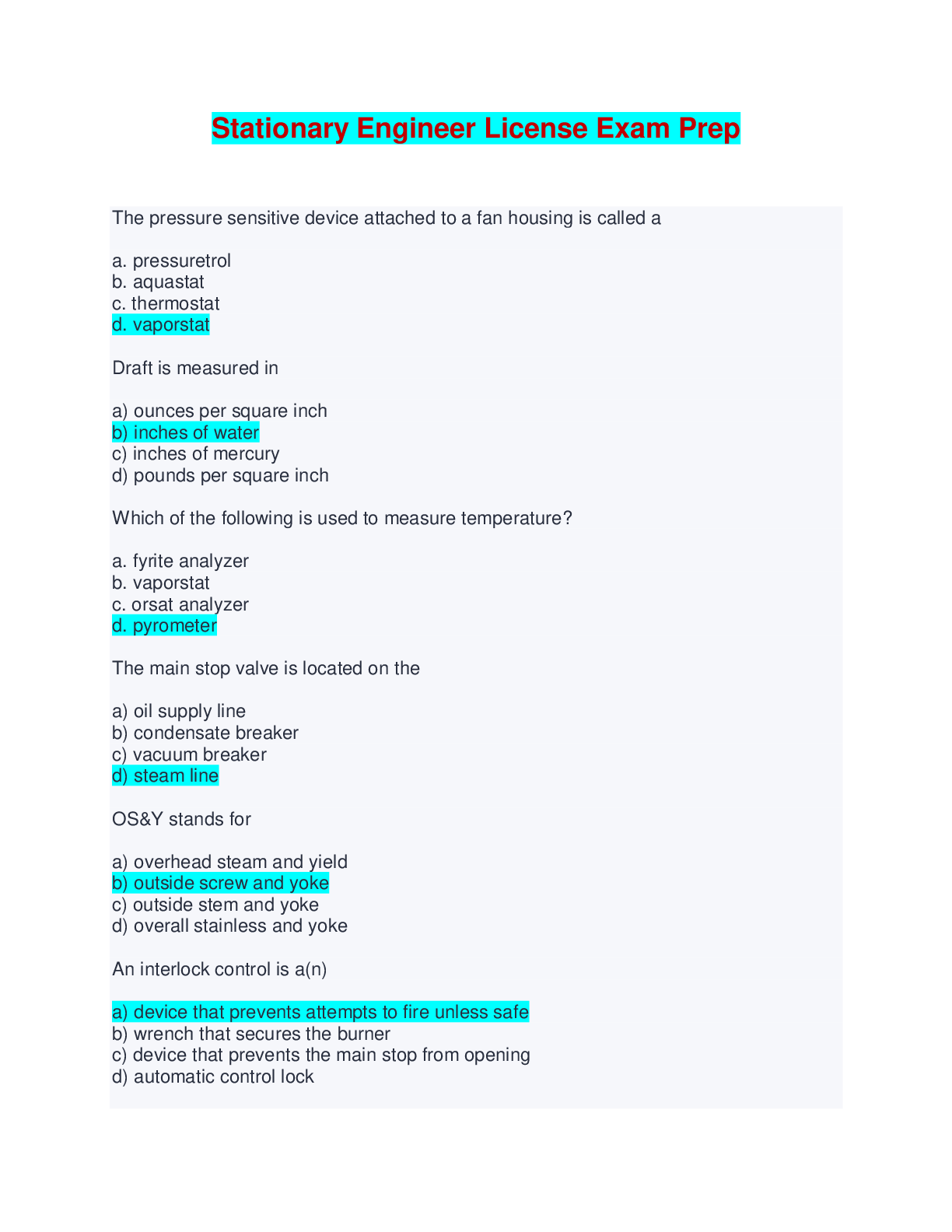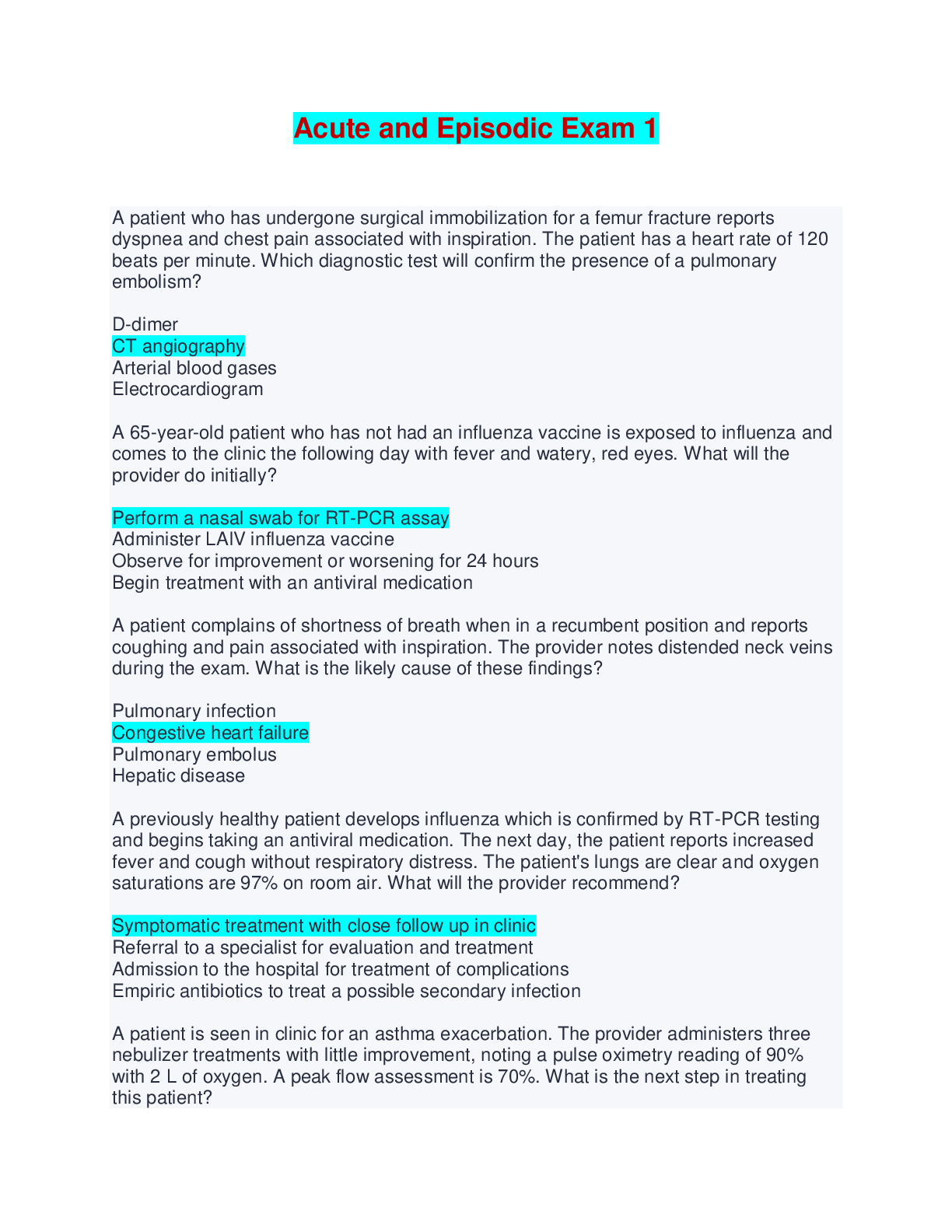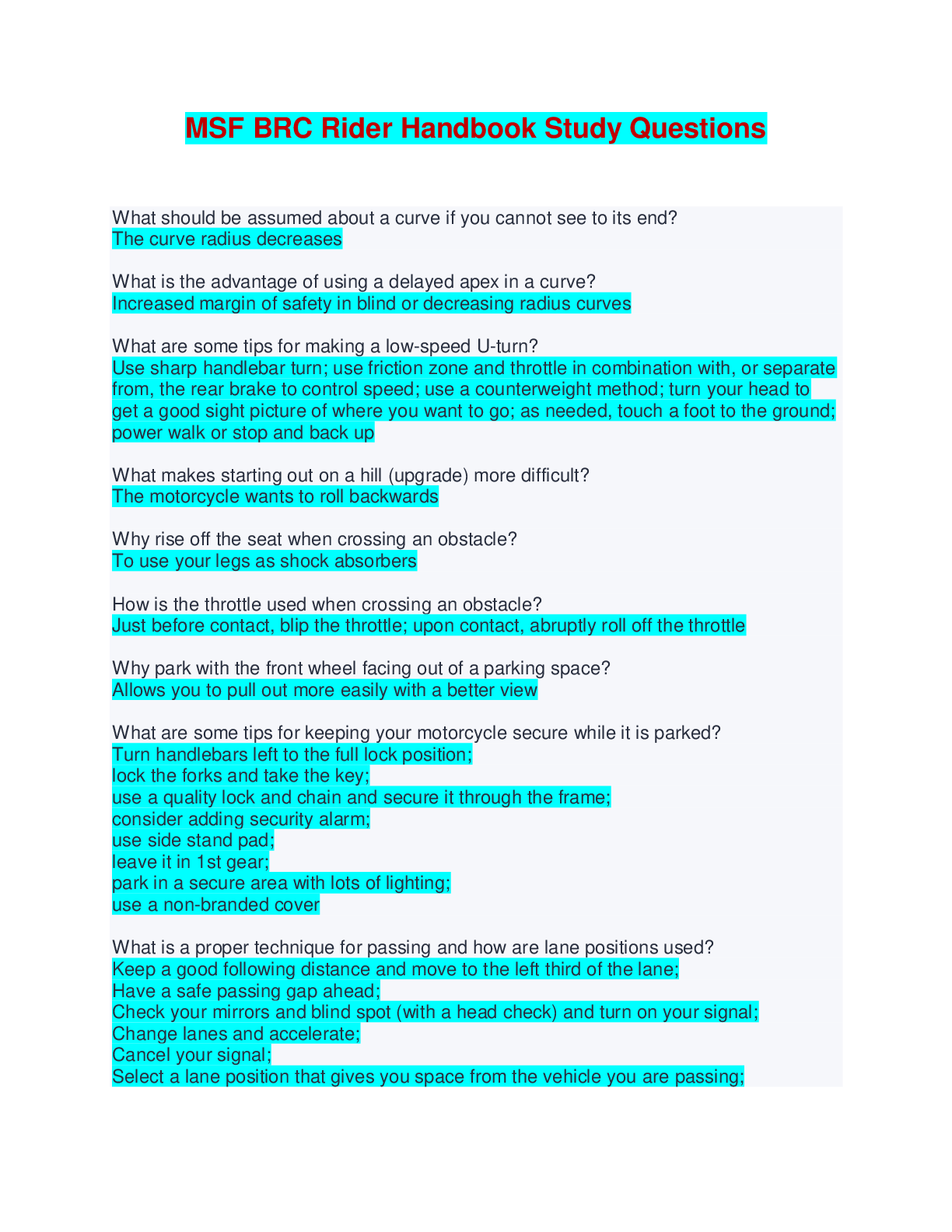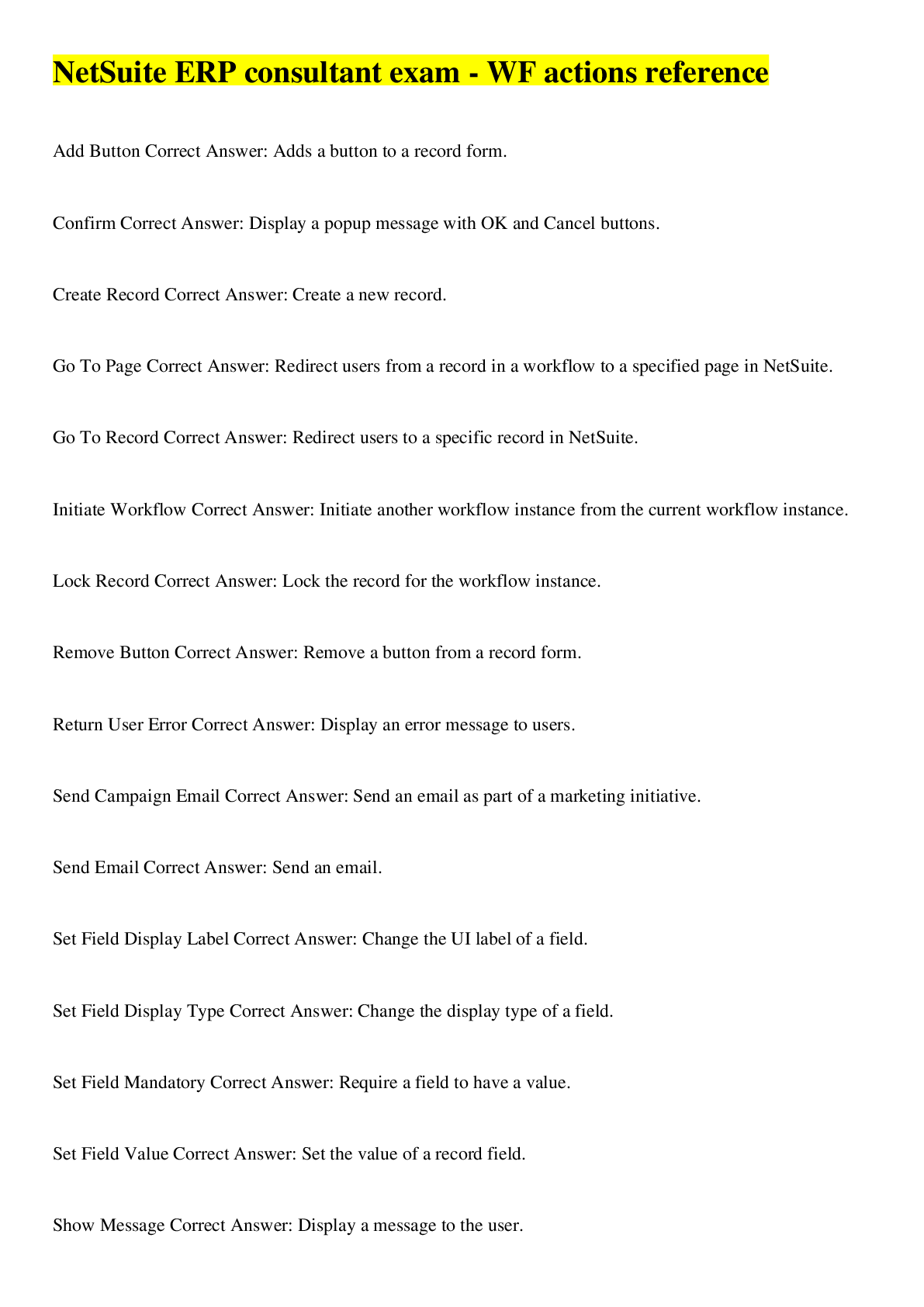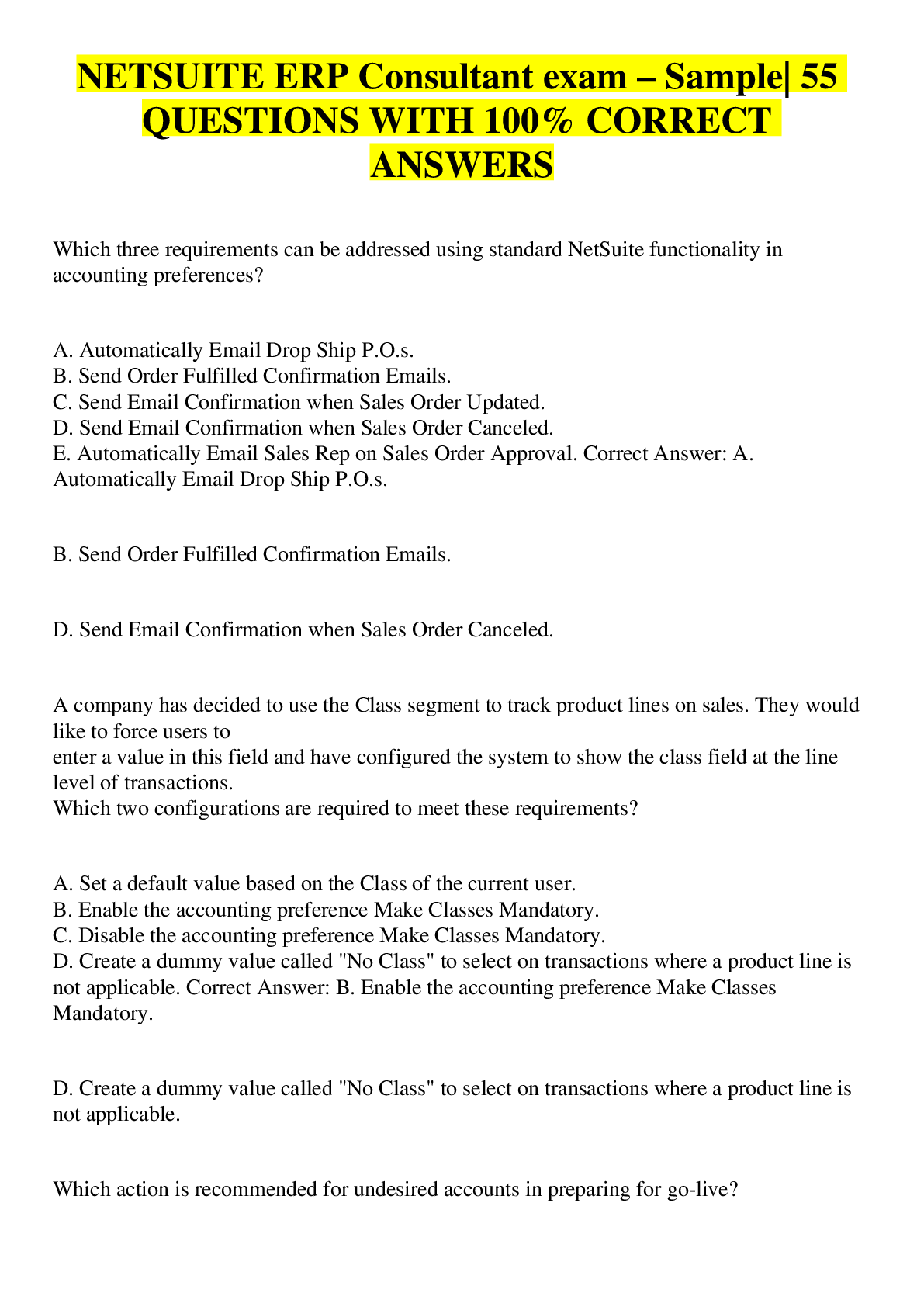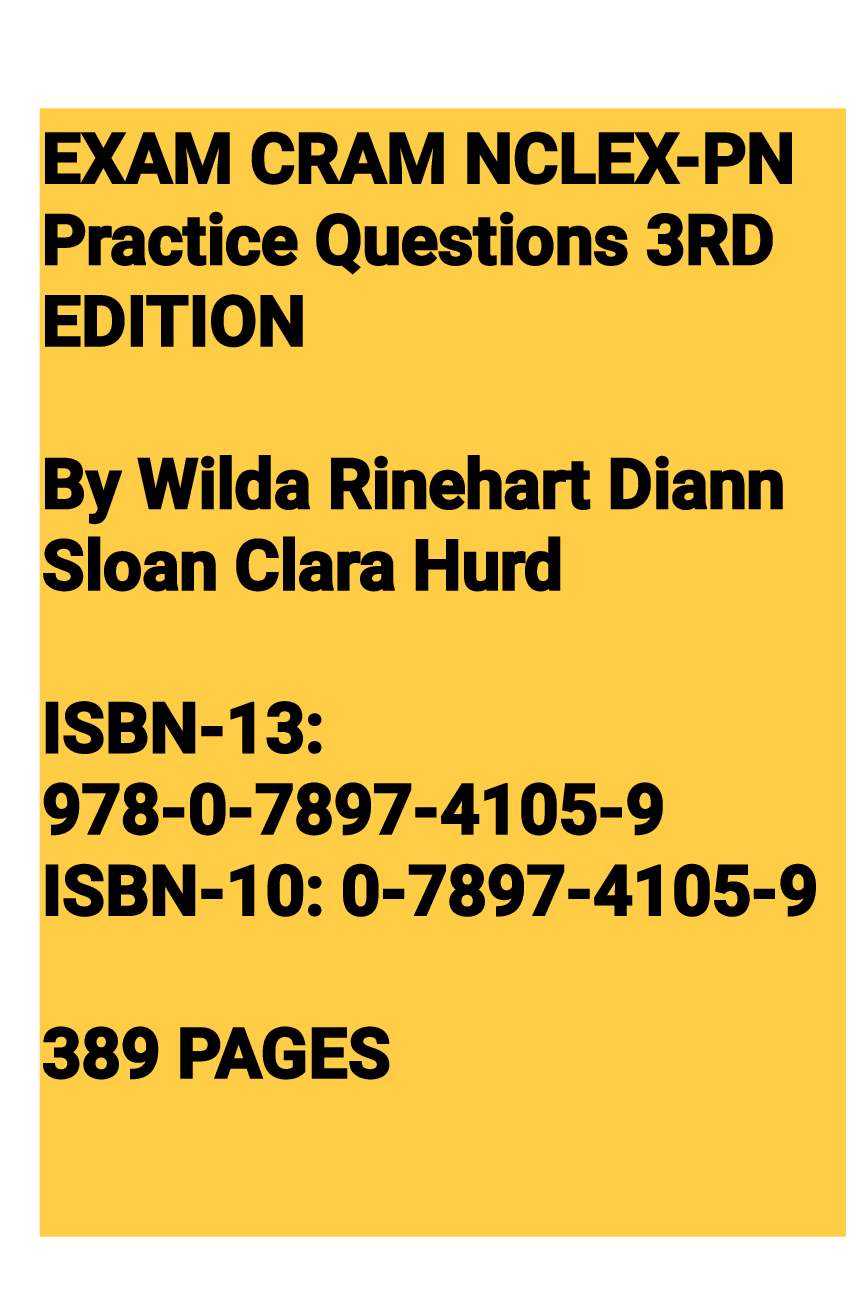Mold Assessment Consultant Exam - Complete Solutions (Answered)
Document Content and Description Below
Mold Assessment Consultant Exam - Complete Solutions (Answered) TMRR, all individual licensees and registrants shall receive refresher training every: 2 Years TMRR, the purpose of a mold assessment ... To determine the sources, locations and extent of mold growth in a building. TMRR, signs advising that a mold remediation project is in progress shall: 1. Be displayed at all entrances to remediation areas adjacent to occupied areas of a building 2. Be at least 8x10 inches in size. 3. Bear the words "Notice: Mold remediation project in progress. TMRR, the purpose of a mold analysis is: Identifying or determining the amount or presence of any fungal products, including but NOT limited to mycotoxins, and fungal volatile organic compounds. TMRR, working day is defined as: Monday through Friday, including holidays. TMRR, biocides and antimicrobial coatings may be used only if: 1. Their use is specified in a mold remediation protocol. 2. They are registered by the EPA for the intended use. 3. Their use is consistent w/ the manufacturers labeling instruction. TMRR, a mold remediation contractor or company shall notify the DSHS of a mold remediation project when mold contamination affects a total surface area of _________ cont. Sq ft or more. 25 TMRR, unless it is an emergency, if mold remediation activities began on a date earlier than what was originally notified for, the DSHS shall be provided with a written notice at least_______ working days before the start of work. 5 TMRR, notification fee for a commercial building is: $100 TMRR, an applicant for an initial license must submit the complete application to the department within ______ of passing the required state licensing exam. 6 months TMRR, a critical violation (Level 1) assessed by DSHS can carry a fine up to ________ per violation. $5000 TMRR, a mold assessment technician is licensed to: 1. Record visual observation and onsite measurements 2. Collect samples for mold analysis. 3. Prepare a mold assessment report 4.As directed by on-site assessment consultant, collect samples during post remediation A document prepared by the DSHS that describes the persons who are requires to be licensed and how to file a complaint is called: CMIS Consumer Mold Information Sheet Mold does not cause: Heart attacks The most important indoor allergenic molds are: Penicillium and Aspergillus Molds reproduce by creating tiny ______ that usually can NOT be seen without magnification. Spores How many days’ notice do you have to notify the state that your insurance has been cancelled? 20 days EPA, which of the following in NOT a cleanup method used for remediating damage to building materials due to mold growth. Scraping N-95 Masks are: The minimum required by the state. The remediation manager's highest priority must be to: Protect the health and safety of the building occupants and remediator workers Protection factor for a N-95 Mask is: 5-10 or minimum protection A ______ is a hand held tool that allows users to see potential mold problems inside walls, ceiling plenums, crawl spaces and other tight areas. Boroscope Mold can grow on hidden surfaces such as: 1. The back side of dry wall, wallpaper or paneling. 2. The underside of carpets and pads 3. The top of ceiling tiles If you know or suspect that damage was caused by contaminated water, _________ requires containment and personal protective equipment. OSHA The preferred flow rate for Air-Call Spore 15 lpm If the flow rate is 15 lPM, and the sample is taken for 5 minutes, what would be the volume? 75 Liters (15L x 5) TXDSH requires _________ ____________ insurance for performing mold related work general liability insurance TXDSH requires licensing when the mold remediation project affects: at or above 25 cont sq feet TXDSH defines a containment area as: one that has been enclosed to control the release of mold or mold-containing dust or materials into the surrounding area. TXDHS defines indoor mold as: mold contamination that was not purposely grown or brought into a building and that has the potential to affect the indoor air quality of the building. TXDHS defines indoor air as: Air in spaces normally occupied by persons in the building but excluding air in attics and crawl spaces that are vented to the outside. TXDHS considers "Mold Analysis" as a sample collected during an assessment for the purpose of: A. determining the amount or presence of or identifying the genus or spectrum of and of any living or dead mold or related parts present in a sample. B. growing or attempting to grow fungi. C. identifying or determining the amount or presence of any fungal products, including but not limited to mycotoxins and fungal volatile organic compounds, present in the sample. A Mold Assessment Report can be: 1. A Stand-Alone Document 2. Part of a mold management plan 3. Part of a mold remediation protocol. [Show More]
Last updated: 1 month ago
Preview 1 out of 20 pages
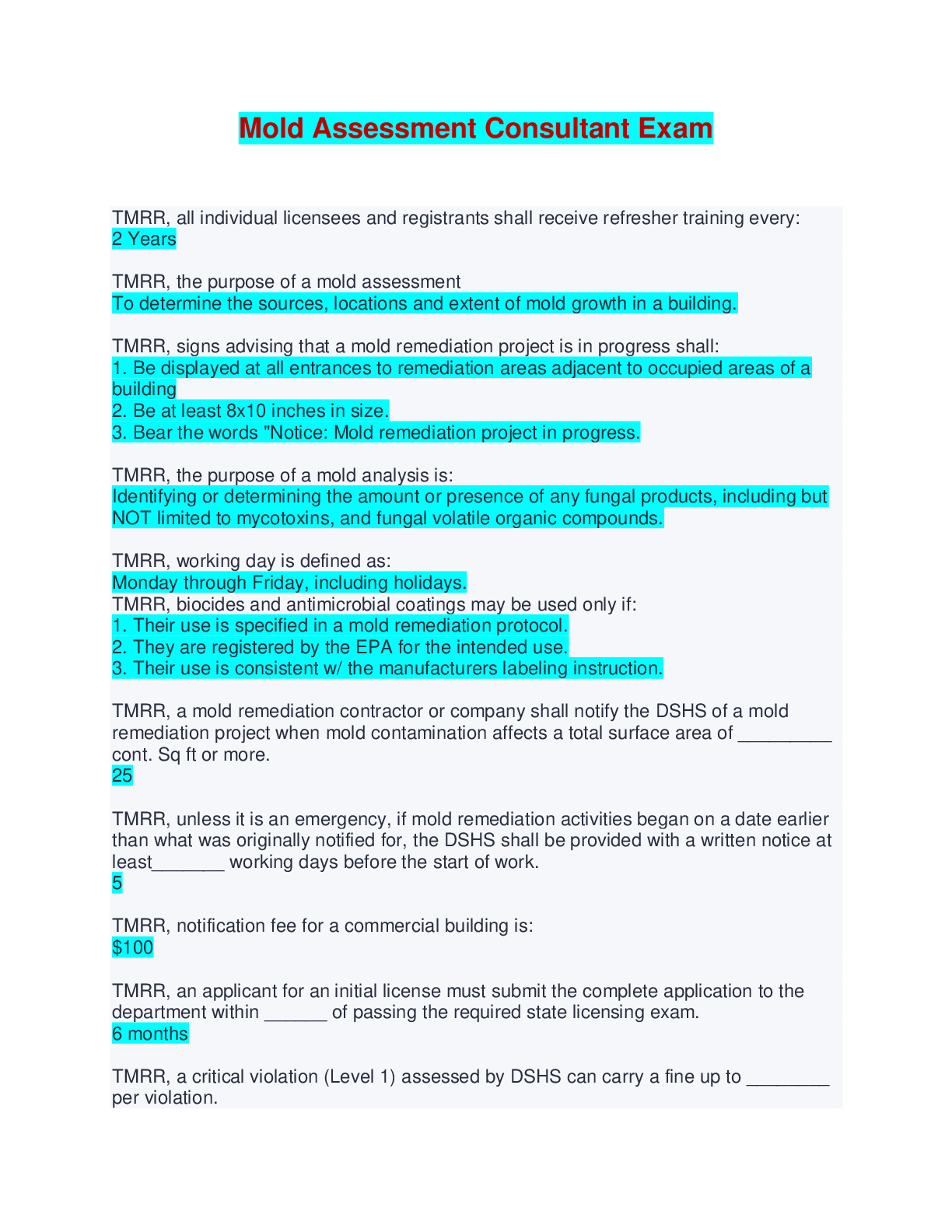
Reviews( 0 )
Document information
Connected school, study & course
About the document
Uploaded On
Mar 22, 2024
Number of pages
20
Written in
Additional information
This document has been written for:
Uploaded
Mar 22, 2024
Downloads
0
Views
22



